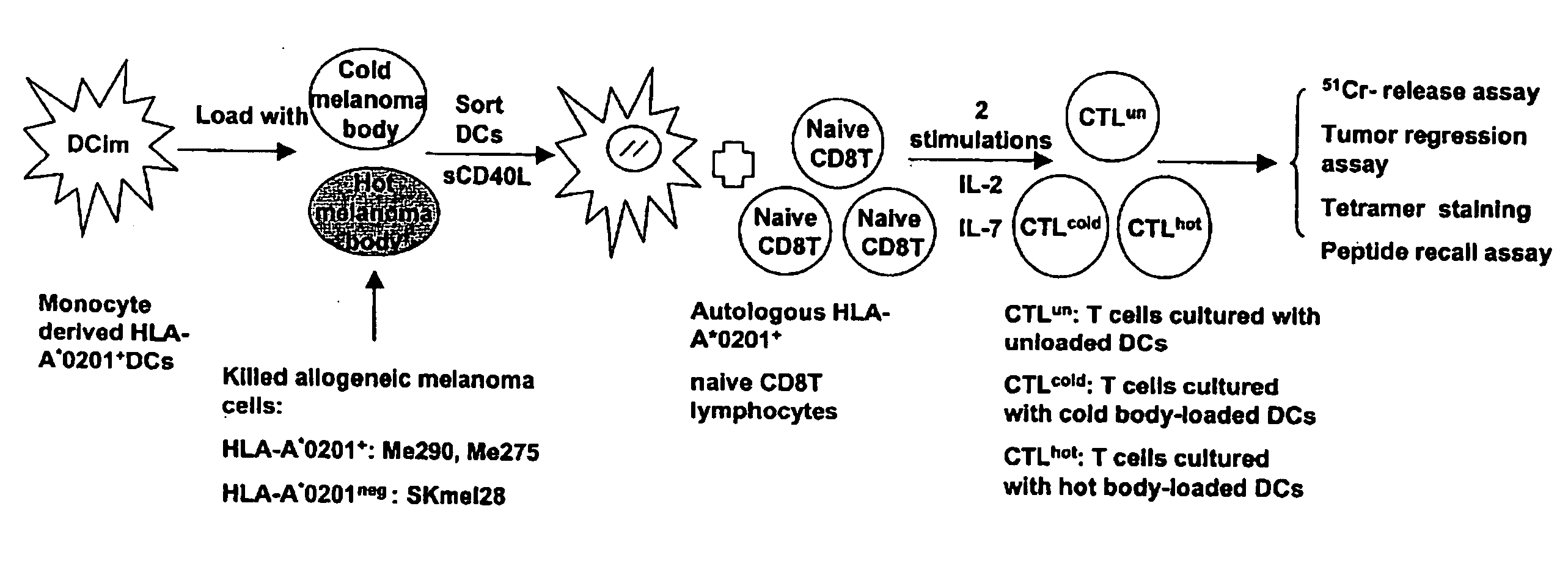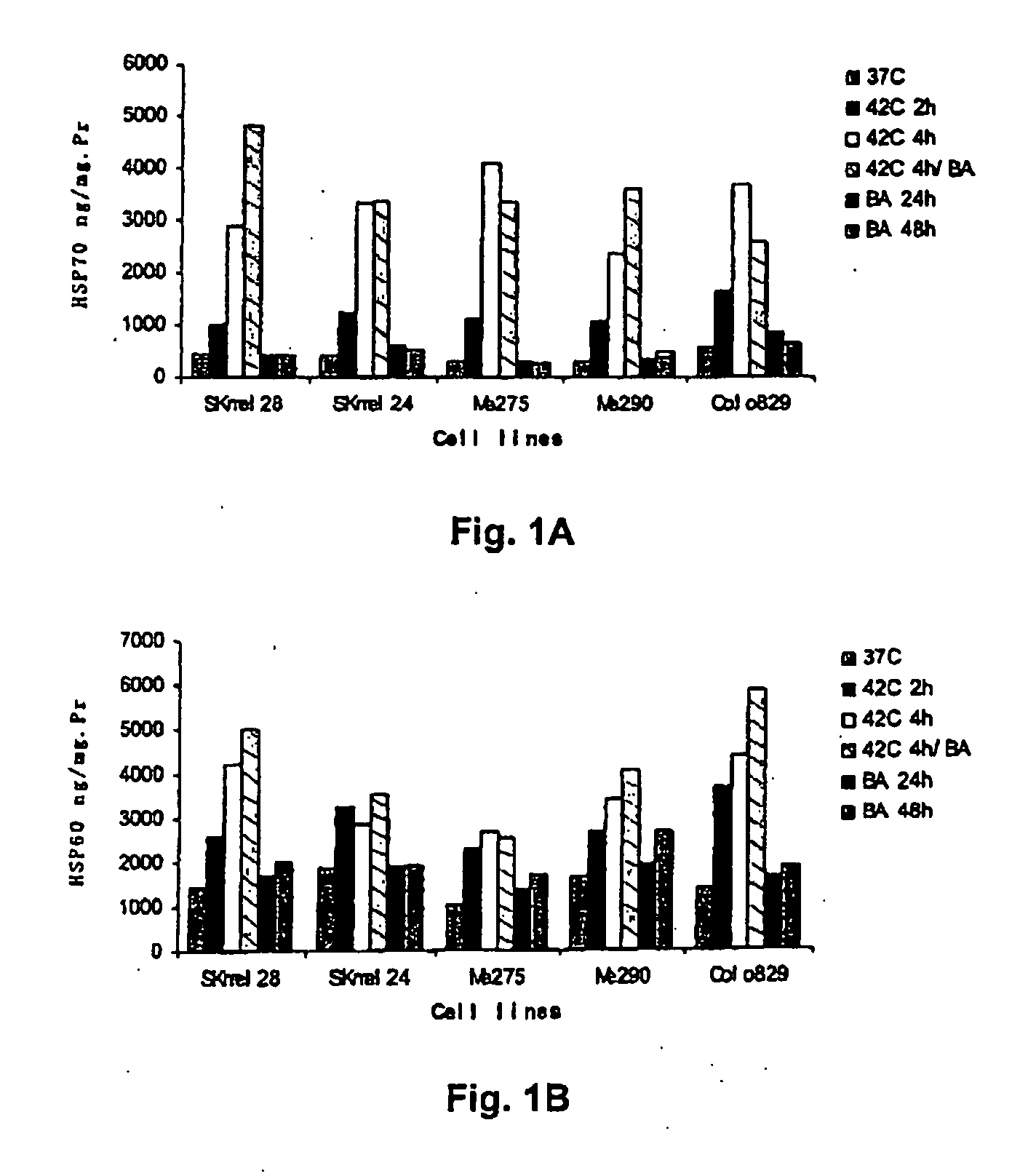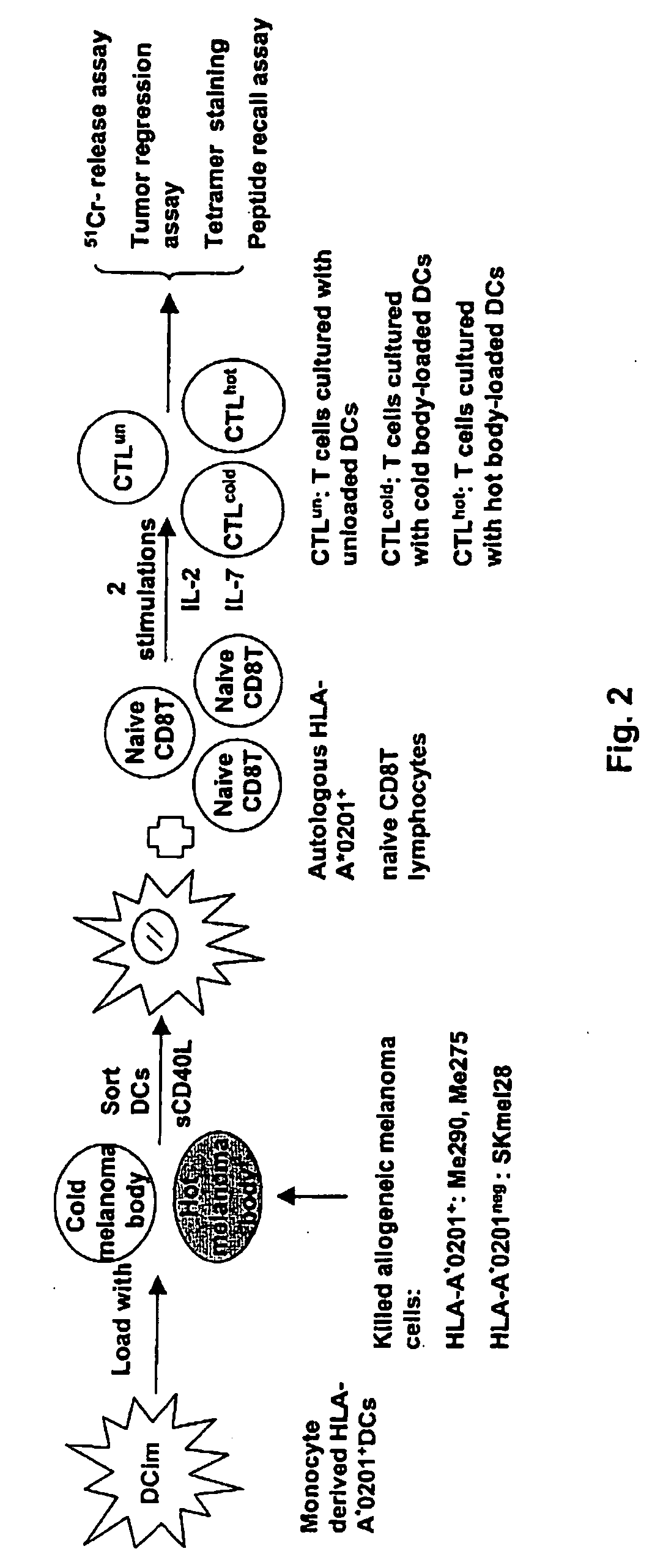Dendritic cells loaded with heat shocked melanoma cell bodies
- Summary
- Abstract
- Description
- Claims
- Application Information
AI Technical Summary
Benefits of technology
Problems solved by technology
Method used
Image
Examples
example 1
[0073] Cell Lines and Cell Culture. Human melanoma cell lines: HLA-A*0201+ Me275 and HLA-A*0201+ Me290 lines were established at the Ludwig Cancer Institute in Lausanne, and were a kind gift of Drs. J-C. Cerottini and D. Rimoldi. Breast cancer cell line MCF-7 (HLA-A2+) (ATCC No. HTB-22) and T2 (HLA-A2+) (ATCC No. CRL-1922) were from the American Type Culture Collection (ATCC; Manassas, Va.). K562 (ATCC No. CCL-243) is a multipotential, hematopoietic, malignant cell line. Colo829 (ATCC No. CRL-1974) is a malignant melanoma cell line. HLA-A*0201neg SKMel28 and HLA-A*0201+ SKMel24 are malignant melanoma cell lines obtained from ATCC. All these cell lines were maintained in complete culture medium (CM) consisting of RPMI 1640 (GIBCO BRL), 1% L-glutamine, 1% penicillin / streptomycin and 10% heat-inactivated fetal calf serum (FCS). For T cell cultures, FCS was replaced by 10% heat-inactivated human AB serum.
example 2
[0074] Generation of EGFP+ Cell Lines. The HLA-A201+ allogeneic cell lines T2, K562, Me275, Me290 and MCF7 were transfected with the lentiviral vector pHREF1α-EGFP (kindly provided by Dr. Patrice Mannoni), which encode the EGFP placed under the control of the Elongation Factor 1α promoter. Transduction of cell lines was performed at a multiplicity of infection (MOI) of 15 for 6 hours with 8 micrograms per milliliter of polybrene (Sigma-Aldrich, St. Louis Mo.) at 37 degrees C. in a 5% CO2 incubator. Fresh media was then added, and culture was resumed. At Day 2 post-transduction, EGFP expression was monitored by flow cytometry. Cells were expanded and sorted to a purity of >95% EGFP+ cells. They were counted and resuspended at 5.104 / ml in cRPMI+10% AB.
example 3
[0075] Reagents and Peptides. The recombinant human cytokines used were GM-CSF (Immunex), soluble CD40 ligand (sCD40L), IL-2, IL-7 and IL-4 (R&D Systems, Minneapolis, Minn.). Betulinic acid (BA) and DNA dye 7-aminoactinomycin D (7-AAD) were purchased from Sigma-Aldrich (St. Louis, Mo.). Peptides: gp100209-217(IMDQVPFSV; SEQ ID NO:1), tyrosinase368-376 (YMDGTMSQV; SEQ ID NO:2), MART127-35 (AAGIGILTV; SEQ ID NO:3), MAGE3271-279 (FLWGPRALV; SEQ ID NO:4) and PSA1 141-150 (FLTPKKLQCV; SEQ ID NO:5) were synthesized by Bio-Synthesis (Lewisville, Tex.). Lyophilized peptides were dissolved in DMSO, diluted to 1 milligram per milliliter in apyrogen water, and stored at −80 degrees C.
PUM
| Property | Measurement | Unit |
|---|---|---|
| Temperature | aaaaa | aaaaa |
| Time | aaaaa | aaaaa |
| Time | aaaaa | aaaaa |
Abstract
Description
Claims
Application Information
 Login to View More
Login to View More - R&D
- Intellectual Property
- Life Sciences
- Materials
- Tech Scout
- Unparalleled Data Quality
- Higher Quality Content
- 60% Fewer Hallucinations
Browse by: Latest US Patents, China's latest patents, Technical Efficacy Thesaurus, Application Domain, Technology Topic, Popular Technical Reports.
© 2025 PatSnap. All rights reserved.Legal|Privacy policy|Modern Slavery Act Transparency Statement|Sitemap|About US| Contact US: help@patsnap.com



